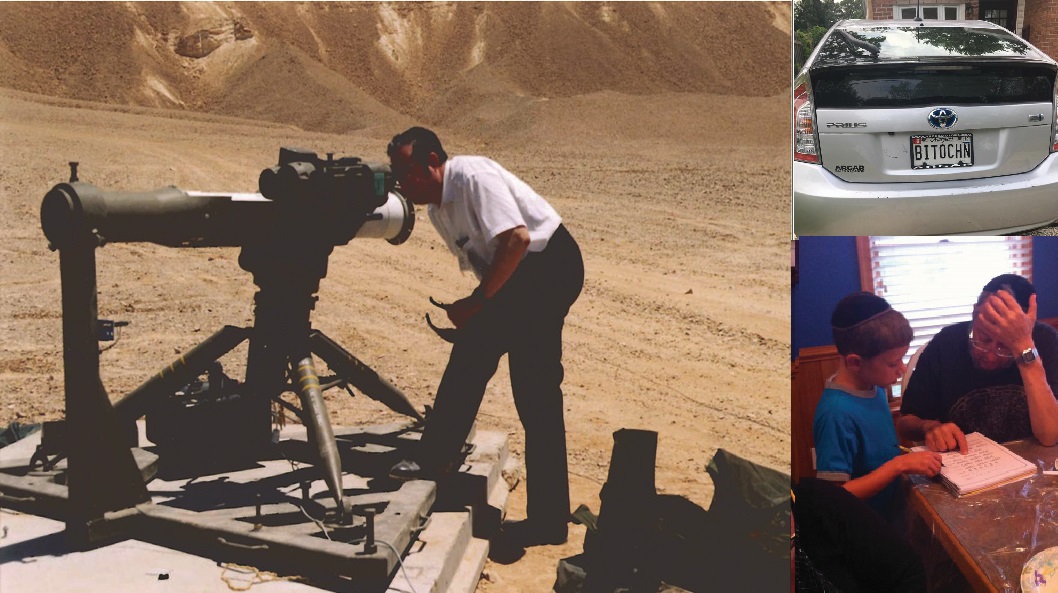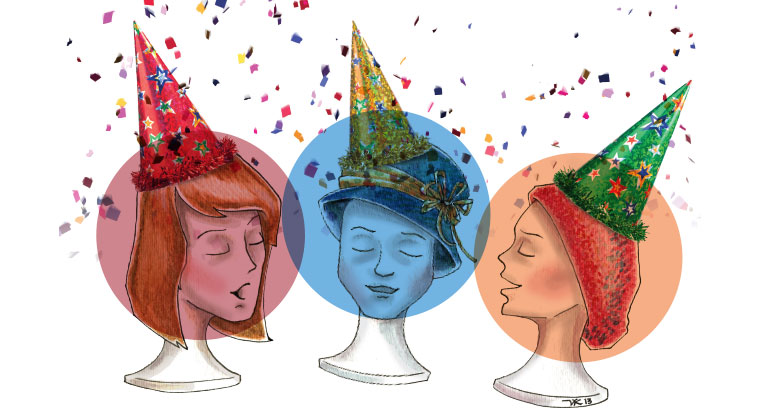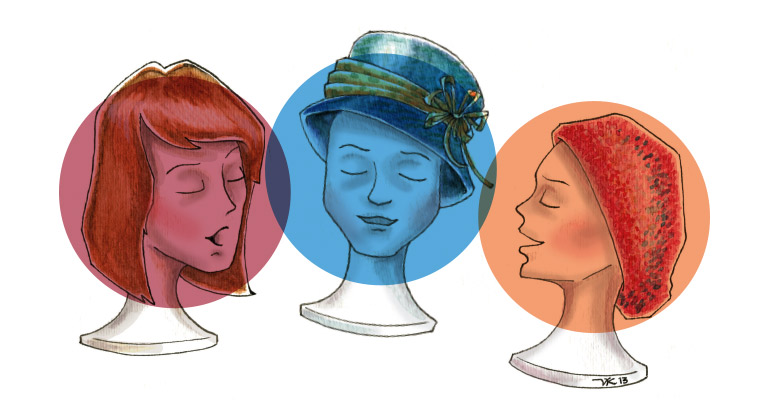SisterSchmooze: Of Bloopers and Blooms

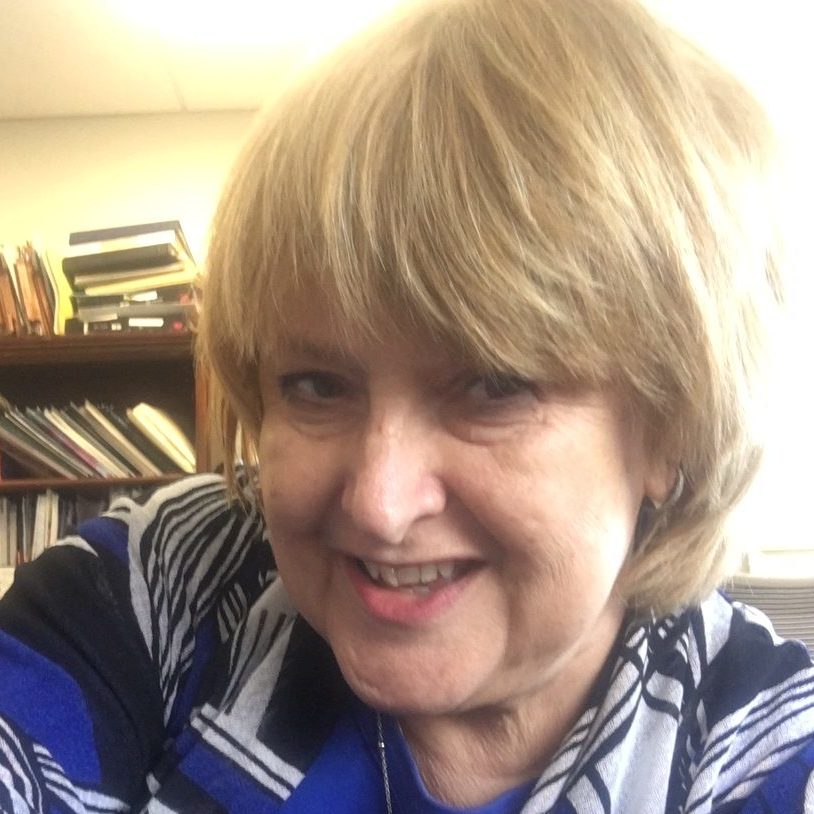

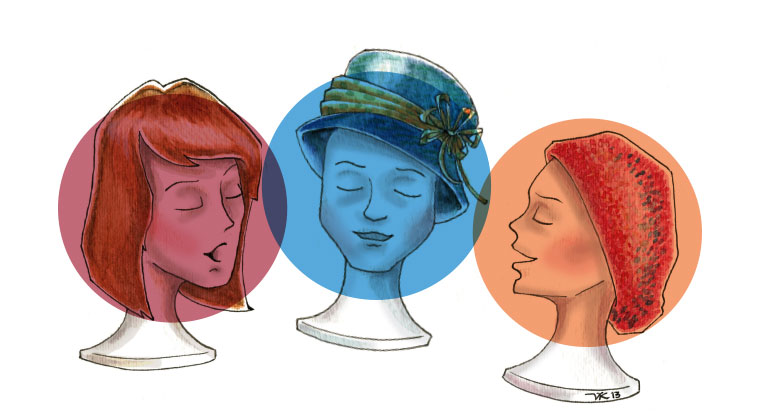
What do weddings and Shavuos have in common?
Flowers, of course.
But more than that… Most of us have heard mefarshim comparing Hashem to a chassan, B’nei Yisrael to a kallah, and Har Sinai to a flower-bedecked chuppah. And those of us who’ve been privileged to witness a hachnasas sefer Torah have seen the Torah being carried under a chuppah to its new home, where it will become the central connection between the mispallellim and Hashem.
Digging even further, we find more comparisons. Anyone who’s ever planned a wedding knows how much logistical, mental, and emotional preparation go into pulling off a flawless event. Similarly, receiving the Torah — both at Sinai and today — requires extensive preparation, though of the spiritual kind.
Those preparations don’t always go smoothly. Sometimes we encounter disagreements or even controversy along the way. Sometimes we experience repeated failures before attaining our goal. And sometimes we need to find ways to come together with others, uniting in agreement, harmony, and achdus.
We Sisters are making our final Shavuos preparations. We’re baking our cheesecakes (okay, full disclosure, two of us are buying). We’re choosing and arranging flowers. We’re counting down the last days of the Omer. And each of these preparations evokes memories.
Come join us as we remember how we got past the hitches and glitches surrounding weddings long past, flower girls and “flower boys” now all grown up, and Shavuos plans nearly gone awry with cheesecake debacles and floral flops.
Marcia’s daughter goes…
Slowly “Petaling” Down the Aisle
My two daughters are 17 years apart. When Leah was born, my mother-in-law, Rose Meth a”h, sent a clipping from Good Housekeeping magazine (July 1994) to my older daughter, Miri. The piece was entitled “SISTERS.” It featured a photo of a bride kissing a flower girl. The text beside it read:
Both my daughters have been brought up on GH, and look how they’ve turned out (right)! Overcoming her initial surprise at acquiring a baby sister at age 17, Lisa found that it came in handy five years later, when Casey was just the right age to be a flower girl at her wedding.
It was signed by a woman from Indianapolis, Indiana.
My mother-in-law had taped the clipping onto a piece of paper from a small notepad. Underneath, and spilling onto the back of the notepaper, was the following handwritten message:
Dear Miri, ad meah v’esrim shanah,
Mazel tov on the birth of your baby sister Leah. May she be a source of Yiddish nachas to all of us. By the way, a two- or three-year-old girl can be a flower girl too. You don’t have to wait five years as Lisa in the clipping did.
Love,
Babbie
Zaidy sends his best.
Four years later… The sun shone brightly on this unusually hot day in May. The gauzy chuppah, adorned with flowers, sparkled white against the blue sky. The guests sat in anticipation. My husband and I stood unseen in the wings, arms hooked with those of our beautiful kallah. Tense at the enormity of the moment, we watched the action unfolding before us.
The music came on, the procession began. First, the chassan with his parents. Then the proud grandparents — including my mother, escorted by our two sons, and my in-laws.
The music changed to a light and airy tune, and it was four-year-old Leah’s turn. She looked adorable in the exquisite blue-and-white gown my mother-in-law had lovingly made for her. Leah was a seasoned pro — she’d already been a flower girl nine months earlier at her oldest brother Avi’s wedding.
Her instructions seemed simple: Take rose petals from your little basket. Place them onto the white runner.
But four-year-olds can be quite literal.
Leah proceeded to take tiny measured steps, carefully placing each petal, inch by inch, in a perfect row down the absolute center of the aisle.
At first it was amusing. Then… not so much. The music kept repeating, the guests started perspiring, and my husband and I looked at each other helplessly.
Then two things happened at once.
From beside us came an unmistakable low-pitched voice: Rabbi Gedaliah Anemer zt”l, founder and rosh yeshivah of the Yeshiva of Greater Washington. We hadn’t noticed him standing unobtrusively in back. In his deadpan manner, he quipped: “At this rate, we’ll have to change the date on the kesubah.”
The kallah, my husband, and I — the only ones who’d heard the joke — burst out laughing. And our tension broke.
Meanwhile, at the other end of the aisle, our younger son Nachum, 18 years old at the time, was standing under the chuppah after helping escort his Babbie down the aisle. Assessing the situation, he realized he was best suited to save the day. Rolling his eyes in brotherly exasperation, he descended the chuppah steps and strode back down the aisle to help his little sister move along faster. When she declined his assistance, he sighed resignedly, smiled mischievously at the guests, scooped Leah up, and carried her toward the chuppah — as only a big brother could.
But the high-drama-turned-low-comedy didn’t end there. Because Leah didn’t go easily. Kicking her little legs, she yelled indignantly:
“Nahum, why you do dhat? I can do it mah-self!”
After the laughter died down, after solemnity was restored, it was time to walk our kallah down the aisle. No tension. No nerves. Just smiles of happiness and gratitude to Hashem for bringing us to this beautiful moment.
Our little flower girl and her big sister are both wives and mothers now. To this day, they both cherish that plastic-encased note written by their Babbie all those years ago — a tangible reminder that her brachah was fulfilled. Who’d have thought a few lines clipped from Good Housekeeping would foreshadow the beginning of my daughters’ Good Homebuilding.
Miriam mulls over…
First Fights and FlowersLike Marcia, I’m also writing about a flower girl.
Kind of.
There are no flowers.
And there are no girls.
But there is a little boy, walking down the aisle to a chuppah.
A bigger boy (and a girl), learning important lessons.
And maybe we’ll even schlep in some flowers at the end.
We’re floating on air. The vort was beautiful. The chasunah is fast approaching. We’ve booked the hall, picked the color scheme, chosen band and food and invitations, and dealt with the million details that go into making a dream wedding. More: We’ve discovered the other half of our souls, our bashert, the one with whom we shall build a beautiful Jewish home with warmth and Torah and all good things.
And, of course, we’ll build a home in which we’ll never, ever fight.
Now it’s time to discuss the chuppah. In those days, siblings and their spouses usually marched down before the kallah. “Marcia and Emmy are getting pale peach gowns,” I tell Chassan excitedly. “And Marcia will get Avi a tuxedo, like he wore at Emmy’s wedding.”
A moment’s silence, then Chassan says, “Kids don’t belong marching down at a chuppah.”
Shock.
“Of course they do. They walk down to ‘Lamenatzeach.’ It’s so cute.”
“Chuppahs aren’t supposed to be ‘cute.’ They’re supposed to be serious.”
And so it begins: the First Fight. I marshal arguments. He refutes them. I get increasingly emotional. He stays stubbornly rational. I pout and sulk. He grows grim and silent. I wonder what kind of ogre I’m marrying, who can’t appreciate my gorgeous little nephew. He, no doubt, shudders at the thought of a lifetime spent with a weepy airhead who understands nothing about the dignity and solemnity of the moment.
Stiffly we say goodbye, the issue unresolved.
A night’s sleep has dissolved some of the anger. I awake, prepared for martyrdom. So what if my gorgeous nephew is banished from the most important moment of my life? So what if my family will never forget this slight? I will be a dutiful kallah and acquiesce to Chassan’s outrageous demand.
The phone rings. Chassan’s voice. “It’s okay, Avi can march. It will be cute.”
Victory! Clearly, I’ve persuaded him with my cogent arguments. Hooray: The ogre can be tamed.
Not quite. It’s only later, the chasunah behind us (Avi looked adorable!), that I discover the hashgachah that ended that first fight so quickly.
Chassan had joined many other chassanim, preparing for married life with their beloved Rabbi Leibel Katz, shlita. That evening, Rabbi Katz had spoken about the wedding plans.
“Let me tell you something,” he said, looking seriously at the faces before him. “Your wife’s parents have been preparing for this chasunah since the day she was born. Your parents have been thinking about it since your bar mitzvah. Your kallah has been planning it since she’s 16 years old.”
His voice grew sharper. “And you? You woke up yesterday and decided you’re ready to get married. And now you think you have a deiah?”
His next words rang out through the crowded room. “Whatever your parents, her parents, and she wants — you do.”
And thus little Avi marched down.
Our First Fight has dwindled into a fond and laughing memory. All the anger and angst over something so trivial in the grand scheme of things seems both silly and funny. Yet there were some important lessons that Chassan and Kallah learned that day, lessons that served them (us) well as we started on the long road of constructing our very own bayis ne’eman:
You can fight. You will fight. You can work it out. And come out better for it.
It’s not all about you anymore. There is a wife/husband. And a wife’s/husband’s family. Think about them, too.
Rabbis are smart. Listen to them.
Oh, yes, I promised some flowers too. So for every new chassan, I leave this final tip. Buy them for her. Roses, if she likes roses. Tulips, if that’s what she loves. Maybe even a cactus, if that’s what she has a taste for.
Because it’s not about you anymore. It’s about her. It’s about “us.”
Emmy Leah learns to speak…
The Language of FlowersShavuos. I think of that beautiful springtime holiday and I picture floral bouquets, cheesecake, and… failure.
Failure?
Okay, let’s start with flowers. Miriam and I were flower girls once. Not cute little five-year-old identical twins marching down an aisle, but two 15-year-old high school girls standing on a hot sidewalk.
Remember that famous musical where a Linguistics professor turns a flower girl — an impoverished young woman selling flowers on London streets to keep from starving — into a princess by improving her English? Well, baruch Hashem we weren’t starving, and our English was fine, as Brooklyn English goes, but for one day we were that sort of flower girl, selling bouquets on a street corner in Boro Park.
But we didn’t turn into princesses — we turned into failures.
Details of the fiasco are sketchy (psychologists would say we’ve repressed the memory). We remember selling flowers Erev Shavuos for some tzedakah. We were given a bucket with bouquets and sent to peddle them to passersby.
Only nobody passed by.
Miriam says we stood on Ninth Avenue. I remember Fifteenth and Fifty-Sixth Street. No matter, it was definitely not the heart of Jewish Boro Park then, and non-Jews in the area weren’t interested in buying flowers for a Jewish cause. So we stood for hours, watching the flowers and our hopes wilting in the heat.
Failure.
And then there was the cheesecake. Shanah rishonah. Of course this New Kallah was going to impress her Young Chassan by baking a rich, delicious cheesecake. I got all the ingredients right, prepared the crust with professional ease, kept a careful eye on the oven temperature. Time to take it out and present Young Chassan with the masterpiece.
“Here, take the oven mitts,” YC says.
“Don’t bother,” NK answers with a laugh. “It’s already cooled off.”
Cooled off — from maybe 350 to 300 degrees. I grabbed the pan with both hands — and promptly dropped the masterpiece all over the kitchen floor. Instead of tasting the sweet delights of a chocolate cheesecake, I tasted… failure.
Two Shavuos fiascos. Memories of failures. Funny now, distinctly unfunny when they happened.
And then there was a Shavuos failure of a more serious kind. Years ago, I was asked to give a woman’s Shavuos shiur in my Rochester shul. I had all sorts of excuses — kids, school, work — and I said no.
All that Shavuos, I was haunted by that decision. I’d said no to teaching Torah on the day we received that Torah.
I’d failed.
Fast forward half a year. I’m asked again to prepare a shiur, this time in Elul. A shiur on teshuvah.
And that’s when I discover that one of the themes of Megillas Rus is… teshuvah. Full teshuvah, when a person who has failed is tested again and now succeeds.
Take Naomi. When her husband Elimelech fails, leaving his people in their time of need, she fails by passively going with him. Years later, when her kinsman Boaz fails in taking responsibility for his family, Naomi is the active force reminding him of what he must do.
Or Boaz. Initially slow to take care of his impoverished relations, once he gets over that initial failure, he moves things quickly to their happy conclusion.
And Rus herself: the ultimate baalas teshuvah, who makes up not for her own failures, but for that of her ancestors. The descendant of Moav, the nation that would not do chesed for the Jewish people, becomes the emblem of chesed in the Megillah that bears her name. She also becomes the foremother of Dovid Hamelech, who had his own failures and whose teshuvah became a model for proper confession and repentance.
Why do we stay up all night and learn Torah on Shavuos? Because it’s… teshuvah! Our ancestors slept the night before they got the Torah. We correct their failure by going to shiurim, staying alert with strong cups of coffee and the inevitable cheesecakes.
Which returns us to my Shavuos disasters. I can’t say I became a professional baker or florist as a result of those debacles. However, I use oven mitts religiously and still enjoy (bakery-bought) cheesecake. And flowers? My house blooms every Shavuos with bouquets.
Preferably bought from some kid peddling flowers on a hot corner.
(Originally featured in Family First, Issue 592)
Oops! We could not locate your form.

